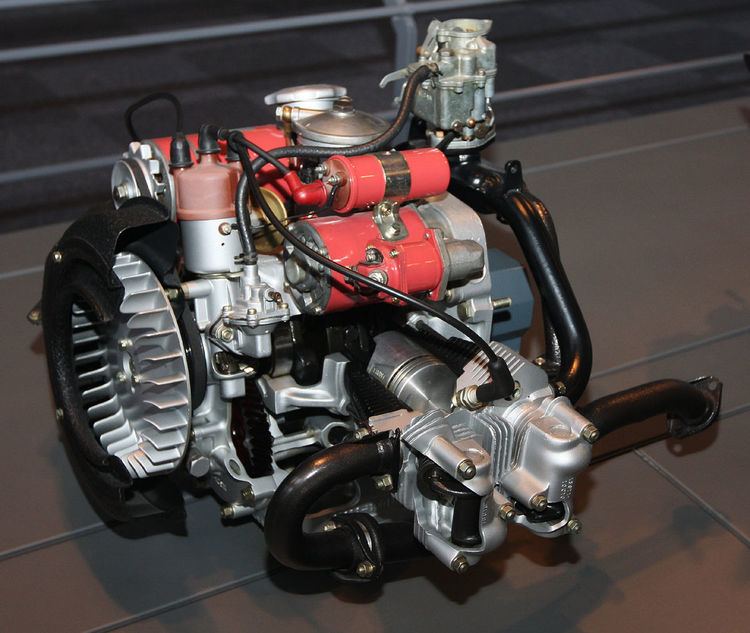Production 1961-19762011-present | ||
 | ||
The Toyota U family was a series of flat-twin engines produced in the 1960s and 1970s. The family was extended in 2011 for the engine derived from the Subaru flat-four for the Toyota 86.
Contents
U
The 697 cc U was produced from 1961 through 1966. The power was increased from 28 to 32 PS (21 to 24 kW; 28 to 32 hp) from engine number U-184170 onwards. It was exclusively installed in the Toyota Publica family of vehicles.
2U
The 790 cc 2U was produced from 1965 through 1969, while the similar 2U-B was produced from 1966 through 1976. Output for the 2U-B when fitted to the Publica is 49 PS (36 kW; 48 hp) at 5,400 rpm. When installed in the Toyota MiniAce (UP100) minitruck and bus series, the engine only produces 36 PS (26 kW) at 4,600 rpm. This version has an 8.2:1 compression ratio. The 2U-C used in some models of the Publica 20 series produced 40 PS (29 kW; 39 hp) at 5,000 rpm. It was also installed in the Publica-derived sports car, called the Toyota Sports 800.
4U
Appearing in the Toyota 86 (also known as the Toyota GT 86 in Europe, Scion FR-S in the USA and Subaru BRZ), the 4U-GSE is a boxer type engine with four cylinders and a bore and stroke of 86 mm. The engine is a Subaru designed and built flat-four engine, the FA20, with a Toyota engine code. The engine is built at Subaru's Oizumi Plant in Ota, Gunma. It features Toyota's D4-S direct and port injection systems, with a maximum power rating of 203 PS (149 kW; 200 hp) at 7000 rpm and a maximum torque rating of 205 N·m (151 lb·ft) at 6600 rpm. The compression ratio is 12.5:1. In 2016, power was increased to 208 PS (153 kW; 205 hp) when equipped with a manual transmission.
